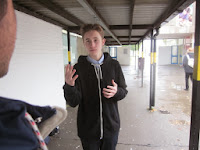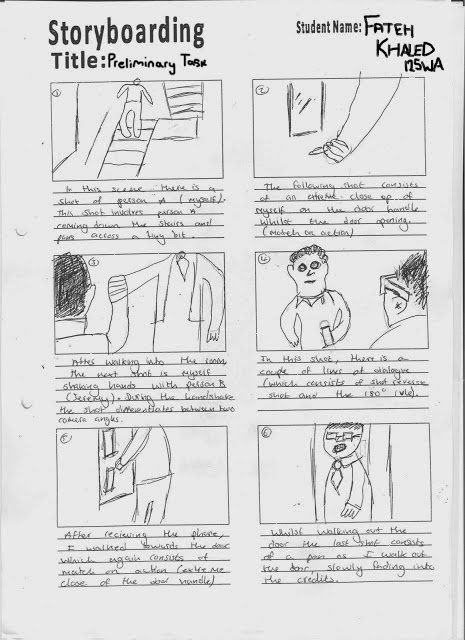Continuity Editing:
Blog Post #29
ESTABLISHING SHOT:
An establishing shot is a long shot or an extreme long shot, it usually consists with loose framing, it makes the audience familiar with the setting and location before the characters are in that certain location. It shows spatial relations between the important figures, objects and setting in a scene.
Establishing shots were more common in the classical era of film making than they are now.
Today film makers tend to skip the establishing shot in order to move the scene more quickly.
Here are two examples of establishing shots:
SHOT-REVERSE-SHOT:

A shot reverse shot is when two shots are edited together that alternate characters, typically in a conversation situation. Usually characters in one frame look left and in the following frame look right.

Below are two examples of shot reverse shots.
Shot-reverse-shot may not be filmed in the correct order but will be edited together afterwards to ensure it looks continuous.
When filming a shot-reverse-shot you must ensure that the right amount of shots are filmed to make the 'shot-reverse-shot' sequence work.
180° RULE

An 180
° rule is when the angle between any two consecutive shots should not exceed 180°, in order to maintain special relationships between people and objects in any given sequence of shots.
The 180
° rule is a principle which underpins all TV and film production.
However, we must remember not to cross the 'line of vision' between two characters.

Otherwise the viewer may not be able to make sense of the scene.
The same rule applies to a moving subject: keep to one side of the direction of motion.
An imaginary line called the axis connects the characters and by keeping the camera on one side of this axis for every shot in the scene, the first character will always be frame right of the second character, who is then always frame left of the first.
If the camera passes over the axis, it is called
jumping the line or
crossing the line.
30° DEGREE RULE

The 30
° rule is the angle between any two consecutive shots that should not be less than 30°, in order to maintain spatial relationships between people and objects in any given sequence of shots.

The 30° change of perspective makes the shots different enough to avoid a jump cut. However, if there is too much movement around the subject then it can violate the 180° rule.
Following this rule may soften the effect of changing shot distance, such as changing from a medium shot to a close-up or extreme close up.
CROSS-CUTTING:

Cross-cutting is the term used when a piece of editing alternates between shots occurring simultaneously.
This is done when the camera 'cuts' away from one action to another action; although it suggests that the scene are simultaneous, this isn't always the case.
Suspense may be added with cross-cutting, it is built through the expectations that it creates and in the hopes that it will be explained with time.
MATCH ON ACTION:

Match on action is a simple but an effective technique. It is when the camera perspective changes into a different shot but maintains flow.
For example, as you can see the images on the right, the images where taken on two separate occasions but it seems like they are occurring at the same time. Film makers do this to alternate camera angles in order to make it more interesting as seeing the same shot for a while can become boring.
It can also show who is there in the shot (ie. a witnesses) for example the top image shows that a fight occurring however the bottom image reveals that there is a witness who is spectating the fight.
EYE LINE MATCH :
An eye line match is a shot which consists of the character looking at something off-screen, followed by a cut to the object or in this case the person who he is looking at.
The second shot shows the person looking back at the direction in which the person was talking to him in. This enables the audience to identify who or what the character is looking at.
RE-ESTABLISHING SHOT:
A re-establishing shot is which returns to the location after a character has engaged in a conversation.
The purpose of a re-establishing shot is to give the audience a sense of surroundings of the character and objects which lie around them.
For example an establishing shot may be used after a couple were having a conversation in their house and after that scene it shows a long shot of the house itself (re-establishing shot)






























